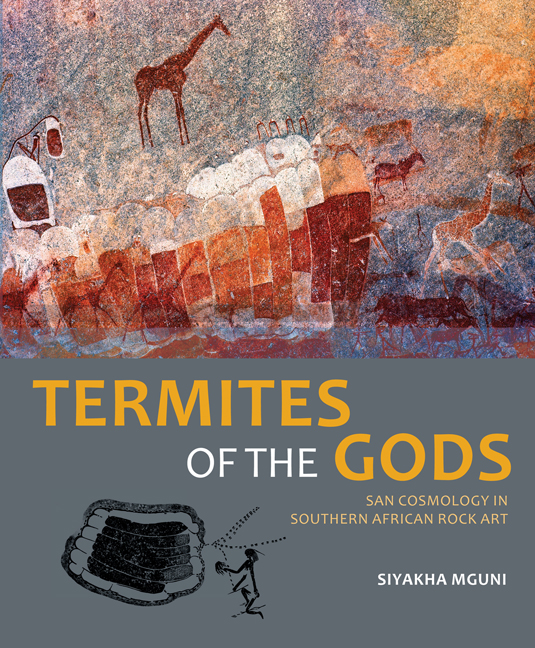Book contents
- Frontmatter
- Dedication
- Contents
- Acknowledgements
- Foreword
- Maps
- Explanatory notes
- Preface: Searching the pasts
- Introduction
- Chapter 1 Ancient mysteries on rocks
- Chapter 2 Meaning in San rock art
- Chapter 3 Tricksters, potency and dance
- Chapter 4 Ways of seeing San rock art
- Chapter 5 Probing deep into formlings
- Chapter 6 Formlings and San cosmological belief
- Chapter 7 Symbolic theatres of San cosmos
- Notes
- List of maps and figures
- Picture credits
- References
- Index
Chapter 4 - Ways of seeing San rock art
Published online by Cambridge University Press: 21 April 2018
- Frontmatter
- Dedication
- Contents
- Acknowledgements
- Foreword
- Maps
- Explanatory notes
- Preface: Searching the pasts
- Introduction
- Chapter 1 Ancient mysteries on rocks
- Chapter 2 Meaning in San rock art
- Chapter 3 Tricksters, potency and dance
- Chapter 4 Ways of seeing San rock art
- Chapter 5 Probing deep into formlings
- Chapter 6 Formlings and San cosmological belief
- Chapter 7 Symbolic theatres of San cosmos
- Notes
- List of maps and figures
- Picture credits
- References
- Index
Summary
One can but only speculate on the personality of the artist who created this painting. Here was an extraordinary person, whose mind could leave the naturalistic tradition of his art to reach out into an ethereal world of abstraction, centuries before the time and thousands of miles from the place of Klee, Mondrian, Braque, and other abstract painters of the 20th century.
Core elements of San belief and cosmology include the notions of Great God and supernatural potency, which find strong expression in the healing dance and the daily life of the people. How these spiritual elements are expressed in the rock art is neither simple nor straightforward. Over time, researchers developed means to make the connections between these facets of San expressive culture. Yet to deal with these intricate connections, and in preparation for deciphering formlings and botanical images, we need to understand the basics of San picture making; for example, common ways in which the painters made and structured their imagery. San rock art, as with many prehistoric artistic forms, is largely representational and draws its subject matter principally from physical or natural phenomena. However, the way in which painters achieved the object-pictorial transformation is complex. I examine the manner in which aspects of San rock art are structured in order to understand how symbolism is embedded in graphic terms.
Early researchers, schooled mostly in Western art traditions, viewed San rock art with the expectation that the subject matter of images they considered ‘good’ representations would be readily recognisable and understandable. I argue that judgements of what forms a good or bad depiction are culturally constructed and based on fundamentals built in a particular cultural context and history. There are therefore no universals in the manner in which we perceive or read graphic representations. Consider what would happen if someone accustomed only to Western textual forms were asked to read hieroglyphics, Mongolian or Mandarin language characters. They would not be able to decipher these foreign scripts, let alone the conveyed meaning. Although images are somewhat different, the caution is the same. Our literary culture has encouraged a literal ‘reading’ of images without taking into account cultural rubrics and conventions that may be in sharp contrast to our own systems of representation. So much of our seeing comes from habit and the expectation of the familiar in that which we perceive.
- Type
- Chapter
- Information
- Termites of the GodsSan cosmology in southern African rock art, pp. 68 - 89Publisher: Wits University PressPrint publication year: 2015



